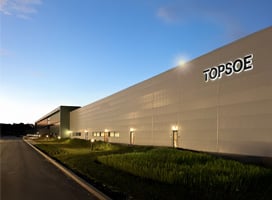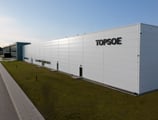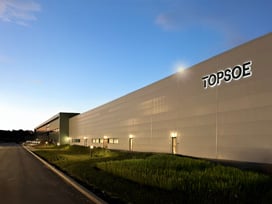Methanol Guard Catalyst
MG-921 is a guard catalyst used for protecting methanol synthesis catalyst from poisons such as iron, sulfur and chlorine.
MG-921 is Topsoe’s second generation of methanol guard catalyst proven at numerous facilities around the world. Like its predecessor, MG-901, the MG-921 guard catalyst can be used regardless of whether the methanol plant is designed by Topsoe or another technology provider.
MG-921 is used in combination with the MK-type methanol synthesis catalysts – MK-121 or MK-151 FENCE™.
Protection against iron poisoning
The gas entering the methanol synthesis reactor often contains trace amounts of catalyst poisons, which typically include iron, sulfur and chlorine.
Iron will be present in the gas as the volatile iron carbonyl (Fe(CO)5) which is formed when the carbon monoxide in the synthesis gas reacts with the steel surfaces in the process equipment.
With no guard, the iron carbonyl will decompose over the methanol synthesis catalyst leading to catalyst deactivation. In addition, iron poisoning will result in increased by-product formation via the Fischer-Tropsch reaction, which can lead to excessive wax formation.
With MG-921, the iron is trapped in the guard layer, effectively protecting the methanol synthesis catalyst from iron poisoning.
Extended catalyst lifetime and increased production
The use of MG-921 will extend the lifetime of the methanol synthesis catalyst, and will result in an increased production over the catalyst lifetime.
.png)









![SAF Airplane runway[1]-1 1](https://www.topsoe.com/hs-fs/hubfs/SAF%20Airplane%20runway%5B1%5D-1%201.png?width=800&height=640&name=SAF%20Airplane%20runway%5B1%5D-1%201.png)



